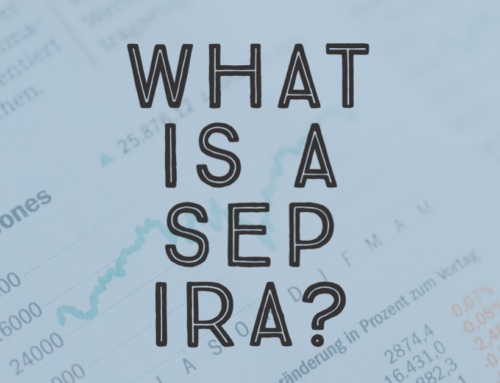If you are a business owner who has a defined-benefit plan, you should be careful that your account does not become overfunded, otherwise you could be a risk for a 50% excise tax. Read on to learn more about how to avoid this tax.
What is a Defined-Benefit Plan?
A defined-benefit plan is an employer-sponsored retirement plan where employee benefits are computed using a formula that considered several factors, such as length of employment and salary history. The company will administer portfolio management and investment risk of the plan. There are also restriction on when and by what method an employee can withdraw funds without penalties. Benefits paid are typically guaranteed for life and rise slightly to account for the increased cost of living.
A defined-benefit plan guarantees a specific benefit or payout upon retirement. Upon retirement, the plan may pay monthly payments throughout the employee’s lifetime or as a lump-sum payment.
Underfunded defined-benefit plans have been receiving more interest due to bear market returns, overfunded defined-benefit accounts have their own set of problems that business owners need to be aware of.
How Can an Account Become Overfunded?
An overfunded defined-benefit plan means that there is a surplus amount of money needed to cover current and future retirements. Actuaries will annually calculate the amount that a company must pay into the plan. The contribution is tax-deductible and is based on the benefits the participants are promised, or receive, and the plan’s estimated investment growth. How much money the plan ends up with at year-end depends on the amount the employer paid to participants as well as the growth earned on the money. Market changes can cause a fund to be either underfunded or overfunded, but it is fairly common for defined-benefit plans to become significantly overfunded – even to millions of dollars.
Why is this a Problem for Small Business Owners?
Unless the owner terminates the plan – retirement, death, or sale of the business – the money can’t be withdrawn. When the plan is liquidated, the sponsor is liable for federal and state income taxes on any excess funds because they were tax-deductible contributions. This means you’re looking at roughly 40% in income taxes plus a 50% non-deductible reversion excise tax.
This excise tax was created in 1986 when Congress passed the tax as a way to protect employees of large companies from corporate raiders intent on liquidating their pension plans to keep the excess funds. This excise tax applies to all qualified defined-benefit plans. As a result of this tax, small business owners without an exit strategy and could lose 90% of their excess pension funds to the government.
What Can I Do?
The good news is that you, as a business owner, have options to correct your overfunded plans so that you don’t lose your funds upon liquidation. It is important to work with a financial professional you trust. They can help walk you through your options and choose the absolute best one for you and your business. Here are a few options you could consider.
Maximize Retirement Benefits of Your Employees
The plan sponsor can apply surplus funds from the plan to enhance current benefits offered by the plan without changing benefit formulas or actuarial assumptions. Business owners can create a sub-account within the existing plan where the sponsor can specify an amount or percentage of salary to be applied so that the participants retire with even greater benefits.
Match 401(k) Contributions
If the funds stay in a sub-account in the plan instead of going into an individual employee’s account, overfunding can be used to match employee contributions to a qualified 401(k) plan.
Add Family Members As Participants
If you have a small, closely held family company, the business owner can add more family members as participants in the plan. Since the plan is already overfunded, additional funding isn’t needed, and the money goes back to the family as benefits instead of to the government as taxes.
Fund Retiree Health Benefits
Business owners are allowed to set up sub-accounts in their plans to fund health benefits for retirement. This allows participants to use the funds to purchase medical coverage or just take the money as an additional pension benefit.
Tactical Sale
You can sell a company with a significantly overfunded plan to a company with an underfunded plan. Following the acquisition, the plans can be merged so the overfunding of one plan compensates for the underfunding of the other. Companies with overfunded plans that are approaching bankruptcy have applied this method successfully. Sale profits are taxed at capital gains rates, but it is much more reasonable than paying 90% in taxes.
Restructure or Reorganize
If the owners prefer to continue with the business as is, restructuring or reorganizing might be a good option. Typically, reorganization can be carried out in a way that improves the value of the overfunding without disrupting the primary business activities.
Next Steps
You should always be proactive rather than reactive in this situation. Work with a financial professional you trust who can help monitor your plan and take the correct course of action should a problem arise. We don’t want you to get caught paying 90% in taxes. You can prepare for something like this with the proper guidance. If you need help with your defined-benefit plan, give us a call at (770) 685-1777. You can also visit activewealth.com and schedule a FREE consultation with us. We look forward to meeting with you!
You can also get more information on defined-benefit plans by visiting https://www.irs.gov/retirement-plans/defined-benefit-plan.
***
Active Wealth Management is a private wealth management firm located in Atlanta, GA. Our team is passionate about educating clients in order to empower them to invest and retire successfully and we believe in managing our client’s assets actively. Active Wealth Management works with three primary groups of people; pre-retirees, retirees, and business owners.
Active Wealth Management is led by our Founder and President, Ford Stokes, and by our Senior Vice President, Brandy Seats. They aim to help clients understand their current financial situation, analyze their current portfolio, and develop a customized financial plan to accomplish their goals. If you would like more information about the firm, please visit our website, https://activewealth.com, or call our office at (770) 685-1777. You will not be passed off to another advisor. You will meet with either Ford or Brandy. You can schedule directly into their calendars at https://activewealth.com/consult/.






